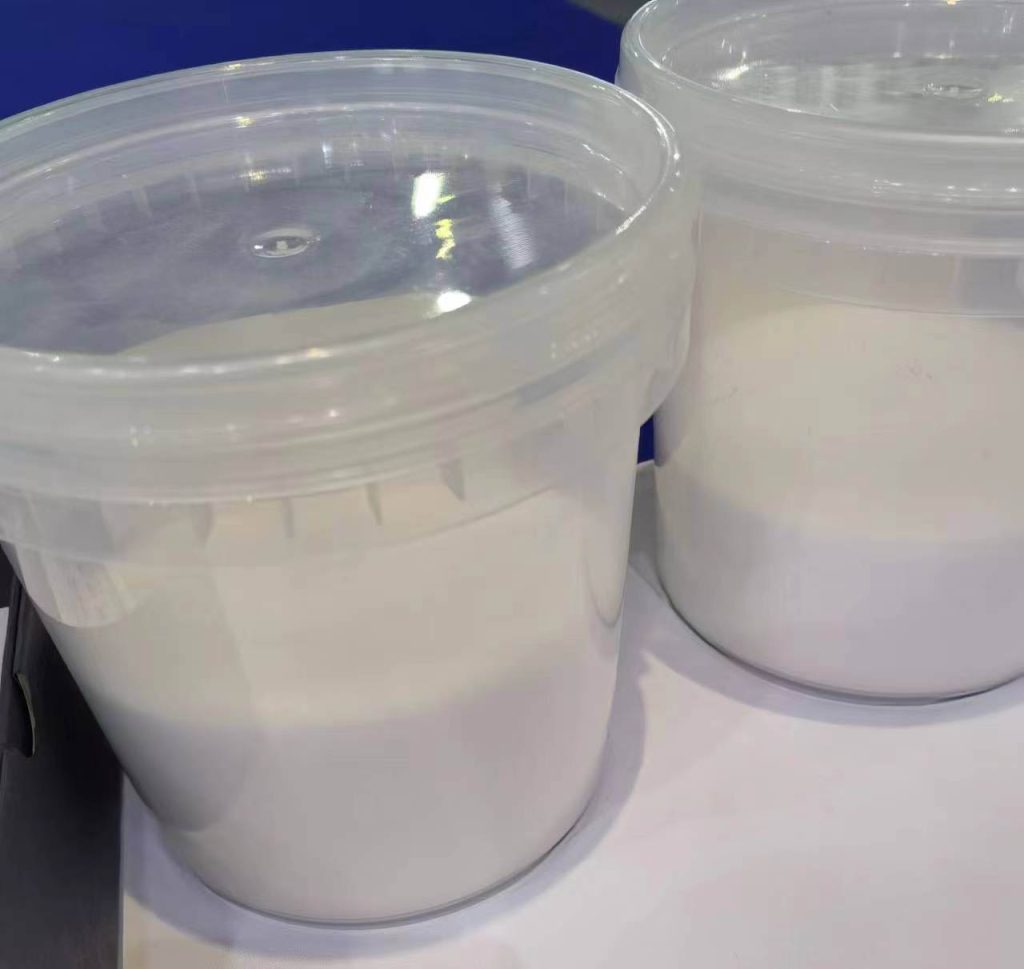HPMC (ko ar ingles)
Hidroxipropilmetilcelulosa
Nu'bu̲ gi preguntas Tange ar viscosidad ar hidroxipropilmetilcelulosa, Xí disponible ja 'nar gama ya grado ar viscosidad ndezu̲ 4000 Pa 100,000 mPa s, utilizan pa da t'ot'e ya sistemas matriz hidrofílica. Nu'bu̲ ar gi 'ya̲ni pa Temu̲ ar gi japu̲'be̲fi ar hidroxipropilmetilcelulosa? Jar hwähi ya productos farmacéuticos, HPMC (ko ar ingles) encuentra usos jar mejora ar solubilidad a través de ar dispersión sólida, Da mats'i nu'u komongu aglutinante ja ya procesos granulación ne contribuye ya formulaciones liberación modificada, ne funcionando komongu 'nar agente viscolizador.
Desempeña 'nar he̲'mi crucial komongu emulsionante ne potenciador ar viscosidad gotas pa yá da̲. Nuna semisintético, inerte, Polímero viscoelástico 'nehe ofrece propiedades multifuncionales komongu ar lubricación, Mejora ar espuma, estabilización, ne formación películas. Derivado celulosa xi a través de 'nar serie procesos químicos, Ar hidroximetilcelulosa t'o̲t'e komongu 'nar polvo fibroso wa granular njät'i nt'axi jar ligeramente blanquecino.
Hidrogeles da base celulosa modificados químicamente |HPMC (ko ar ingles)
¿Ter 'me'ä ar hidroxipropilmetilcelulosa?? Destaca nge to ne hidrogel a base de celulosa modificado químicamente ko propiedades excepcionales. Celulosa, junto con biopolímeros relacionados komongu ar quitina ne ar quitosano, ngetho ge ar base nuya materiales hidrófilos. Nuya hidrogeles exhiben 'nar mfeni ho̲ntho pa absorber ne retener cantidades significativas ar dehe mbo ja ya espacios intersticiales yá estructuras.
Incorporación hidroxipropilmetilcelulosa jar formulaciones hidrogel aprovecha ár 'mui hidrofílica inherente. Nuna ar característica permite ke ya hidrogeles basados HPMC aprovechen eficazmente ar dehe, nä'ä lleva ár impresionante mfeni ya hinchazón ne ya retención humedad. 'Nehe, nä'ä químicamente modificada ar HPMC imparte 'nar dätä nzäm'bu ne control dige ya propiedades físicas ar hidrogel, nä'ä nä'ä bi pa̲ti ja 'nar excelente candidato pa 'nar nt'ot'e ho 'bui ndunthe gama aplicaciones.
Ya hidrogeles hidroxipropilmetilcelulosa 'bu̲i relevancia jar numerosos campos nu'bya ár adaptabilidad ne versatilidad. Jar biomedicina, Nuya hidrogeles ar exploran ir nge ár ár hne jar sistemas ntsuni controlada fármacos. Estructura porosa ya hidrogeles a base de hidroximetilcelulosa permite ar encapsulación ne ar liberación sostenida ar agentes terapéuticos, Contribuir mejorar ya modalidades ár nt'ot'e. The water-absorbing capacity of Hydroxypropyl Methylcellulose also extends its utility to paints, Recubrimientos, and adhesives manufacturing.
Chemistry
What is hydroxypropyl methylcellulose’s chemical formula if you may ask? It is encapsulated within its chemical formula C56H108O30, which provides a snapshot of its intricate molecular structure. This compound, also known as hypromellose, embodies a remarkable fusion of elements that underpins its multifaceted functionality and applicability.
The amalgamation of hydroxypropyl and methylcellulose signifies the dual modifications present within HPMC’s molecular architecture. The hydroxypropyl groups introduce a hydrophilic nature, enabling water absorption and retention, while the methylcellulose aspect adds structural stability and control over properties like viscosity.
HPMC is a cellulose ether that has a distinctive alteration in the fundamental cellulose structure. This alteration involves the strategic substitution of hydroxyl groups found within the cellulose ring. Specifically, one or more of the three hydroxyl groups present in the cellulose ring undergo this transformation, leading to the creation of HPMC.
This molecular modification of cellulose grants Hydroxypropyl Methylcellulose HMPC an array of remarkable properties. The introduction of hydroxypropyl and methyl groups not only imparts hydrophilicity but also introduces a degree of hydrophobicity, resulting in a finely tuned balance of water interaction. This delicate equilibrium lies at the heart of HPMC’s versatility and applicability across various industries.
Usos
In the context of coatings, Hydroxymethyl Cellulose’s inclusion offers a dual benefit of moderate moisture and oxygen barrier properties. This quality is paramount in scenarios where the protection of substrates from moisture and oxygen is critical. These barrier properties contribute to the longevity of coated surfaces, making HPMC-based coatings ideal for applications ranging from structural protection to decorative finishes.
HPMC’s incorporation into architectural coatings imparts longevity and visual appeal. From exterior paints that face the elements to interior coatings requiring both aesthetics and protection, HPMC plays a significant role in meeting the demands of the architectural industry.
Beyond coatings, HPMC finds utility in adhesive formulations. Its ability to enhance viscosity, provide binding strength, and contribute to the adhesive’s overall performance has positioned it as a valuable ingredient in adhesive manufacturing. Other uses of HMPC are the following:
- Cement renders
- Paints and coatings
- Food
- Cosmetics
- Eye drops
- Detergents and cleaners
- Tile adhesives
Benefits of Using HPMC
One of the standout contributions of Hydroxymethyl Cellulose lies in its ability to enhance the plasticity of tile adhesives. This property transforms the adhesive’s behavior, making it more malleable and versatile. Enhanced plasticity translates to better adherence to surfaces, facilitating the proper alignment and placement of tiles during installation.
HPMC is hydrophilic, biodegradable, and biocompatible polymer offers an array of advantages that make it an invaluable asset in various sectors, including drug delivery, dyes and paints, cosméticos, adhesivos, Recubrimientos, agriculture, and textiles.
One of the key attributes of HPMC lies in its hydrophilic nature, rendering it water-soluble. This quality becomes particularly significant in applications where water-based solutions are desired. This property is harnessed in various industries, ranging from pharmaceuticals to cosmetics, where the efficient dispersion and dissolution of Hydroxymethyl Cellulose enhance product efficacy.
HPMC’s biodegradable and biocompatible properties align seamlessly with the growing emphasis on sustainable and eco-friendly solutions. As a biodegradable polymer, Hydroxypropyl Methyl Cellulose contributes to reducing the environmental impact of products and processes. 'Nehe, its biocompatibility paves the way for safe usage in medical and cosmetic applications, ensuring minimal adverse effects on human health.
Effect of Adding Nano-Materials on the Properties of Hydroxypropyl Methylcellulose
The introduction of nano-materials, such as whiskers, into HPMC matrices results in nanocomposite films with superior water barrier and mechanical properties when compared to pure HPMC films. This enhancement in water barrier properties is of particular significance in applications where moisture resistance is paramount. Adicionalmente, the augmented mechanical properties impart durability and resilience to the films, expanding their potential usage in industries where robustness is essential.
t’s worth noting that while the incorporation of nano-materials can enhance the performance of Hydroxypropyl Methyl Cellulose based films, there might be a trade-off in terms of transparency. The nanocomposite films, despite their improved attributes, may exhibit a marginal reduction in transparency. This delicate balance between performance and aesthetics becomes a crucial consideration in industries where visual appeal is essential, such as packaging or displays.
Specifications
HPMC is a white to slightly off-white fibrous or granular powder. This visual attribute is not only characteristic of HPMC but also essential for recognizing and utilizing it effectively in diverse applications. The apparent viscosity of a 2% weight-to-weight (w/w) HPMC solution is specified within a range of 4 Pa 6 centipoise (cps). This viscosity measurement provides insights into Hydroxypropyl Methyl Cellulose’s ability to influence the flow and consistency of solutions in various applications.
Hydroxypropyl Methylcullulose’s specification of being “insoluble in water” is a defining attribute. This characteristic is pivotal in various applications where water resistance is desired. The specification defines a hydroxypropoxy content ranging from 7 Pa 12%. The maximum loss on drying is specified as 10%. Another notable specification is HPMC’s odorlessness. The absence of odor contributes to its compatibility with applications where scent neutrality is crucial, such as in the food, pharmaceutical, and cosmetic industries.
Their thickening and binding properties make them valuable components in sectors requiring enhanced adhesive strength and increased viscosity. High viscosity grades excel in applications demanding stability in challenging environments. Whether it’s in paints, Recubrimientos, or adhesives subject to harsh conditions, these grades provide the necessary structural integrity and resilience.
Safety Information
When working with Hydroxypropyl Methylcullulose, caution is warranted to prevent the creation of dusts. Inhalation of product dust, particularly fine particles, should be avoided. This preventive measure is essential to protect the health and well-being of individuals handling HPMC, as inhalation of fine dusts can pose respiratory risks.
A core safety consideration involves avoiding direct contact with product dust. This practice minimizes the potential for skin irritation or sensitization that might arise from contact with airborne particles. Airborne dust concentrations exceeding 20 mg/l carry the risk of triggering a dust explosion hazard. This underscores the importance of proper handling and containment procedures, preventing the accumulation of excessive dust concentrations that could potentially lead to hazardous situations.
During thermal processing, the potential release of vapors or fumes must be acknowledged. To maintain safety, individuals are advised to avoid breathing in these vapors or fumes. Proper ventilation and protective equipment are essential to mitigate any associated risks.
Conclusions
In conclusion, Hydroxypropyl Methylcellulose Hydroxypropyl Methyl Cellulose embodies versatility in its truest form. As industries evolve and seek solutions that blend innovation with safety, HPMC continues to play a vital role, stitching together improved properties, streamlined processes, and promising possibilities. Its presence across diverse sectors reaffirms its status as a catalyst for progress.
The benefits of Hydroxypropyl Methylcullulose reach far and wide, whether through its role in improving the plasticity of tile adhesives or its biocompatible and hydrophilic nature that align with sustainable practices. As nano-materials join the equation, HPMC’s properties evolve further, ushering in enhanced performance while striking a balance between functionality and aesthetics.
Hydroxypropyl Methyl Cellulose’s specifications and safety guidelines underline the importance of handling this compound with care. The visual identity, viscosidad, and chemical composition underscore its unique attributes, while safety measures emphasize prevention of dust creation, careful inhalation practices, and vigilance during thermal processing.
We expect your inqury abnout HPMC.


